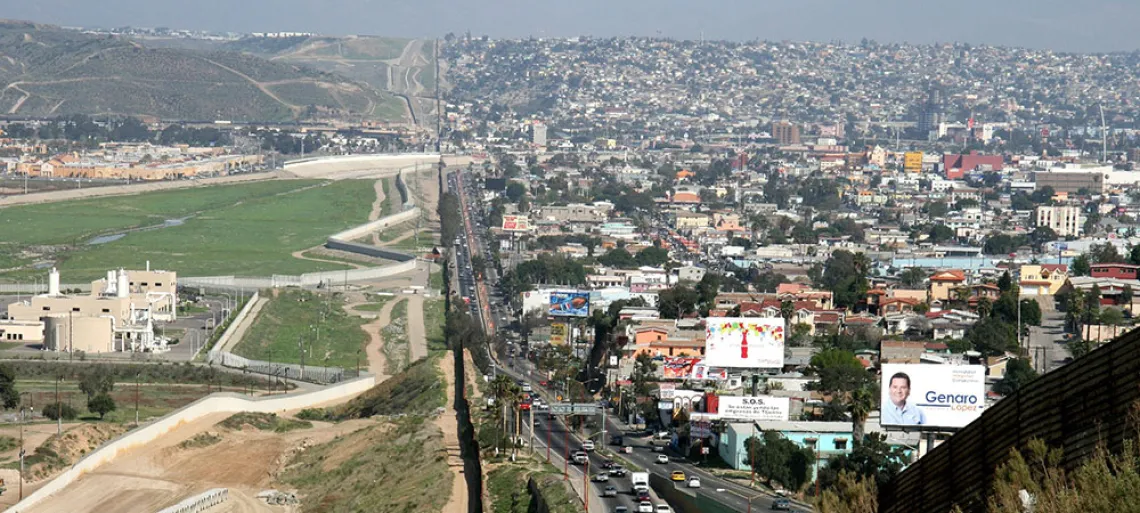Increased Trade With Mexico Called Vital to State
The country dwarfs Arizona's other trade partners with a share of more than 40 percent, although growth of both economies has been only moderate since the Great Recession.

Arizona exported $8.6 billion worth of goods to Mexico in 2014, a 22 percent increase from the previous year — and one of the highest export growth rates in the U.S.
It’s a bright spot for the state, as post-Great Recession growth continues to lag behind expectations.
At the annual "Breakfast With the Economists" event recently, George Hammond, director of the Economic and Business Research Center, and Roberto Coronado, assistant vice president and senior economist at the Federal Reserve Bank of Dallas-El Paso, offered context for those figures to a crowd of more than 330 southern Arizona business and public policy leaders.
Last year, the Arizona-Mexico Commission, along with the Arizona Commerce Authority, Arizona Department of Transportation and Arizona Office of Tourism, partnered with Eller’s Economic and Business Research Center to launch the Arizona-Mexico Economic Indicators website, azmex.eller.arizona.edu. The site focuses on Arizona’s trade with Mexico, assessment of the role of Arizona’s border ports of entry in the U.S.-Mexico border region, and monitoring of key indicators of Mexico’s economy.
"Mexico is the third-most important trading partner for the U.S. and the top export partner for all border states," Coronado said.
Overall, U.S.-Mexico trade flows reached record-high levels in 2014 at more than $530 billion, representing exports plus imports. Forty-one percent of Arizona’s merchandise exports go to Mexico.
Coronado’s presentation at the June 3 event focused on Mexico’s improvements to macroeconomic policy and its structural reforms, as well as its economic outlook, with particular focus on the border region.
"After a strong recovery from the so-called Great Recession, Mexico’s economy entered a soft patch since the second half of 2013," Coronado said. "Mexico’s economy has been gaining momentum since the second half of 2014, but growth has been moderate at best."
Arizona’s economy is likewise characterized by slow growth, but there’s a good chance that growth will improve, Hammond said. "And trade with Mexico matters in our state’s overall economic health," he said.
At 41 percent, Mexico dwarfs Arizona’s other top export partners, which include Asia (25 percent), Europe (18 percent) and Canada (10 percent).
In 2014, minerals and ores became Arizona’s top export commodity to Mexico, surpassing both computer and electronic products, and electrical equipment and appliances, the latter being Arizona’s long-standing top exports.
Over the last 10 years, the minerals-and-ores share of total exports to Mexico rose from 0.2 percent in 2004 to 26.6 percent in 2014.
"A large part of that is copper," Hammond said.
Hammond noted one development to keep an eye on: the impact of the rapidly rising value of the dollar on exports.
"The dollar is up roughly 20 percent over the year against major currencies," he said. "More importantly for Arizona, the dollar is up significantly against the peso."
Exports are driven by exchange rates, relative prices and relative income trends. "So a rapidly rising dollar means that Arizona goods and services become more expensive to Mexicans," Hammond said. "Accordingly, Mexican goods and services become less expensive to Arizonans. That is a recipe for slower Arizona export growth, all other factors remaining the same."
Top photo of U.S. and Mexico flags courtesy Shutterstock.

